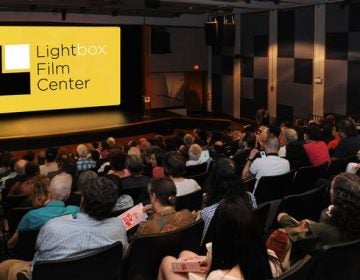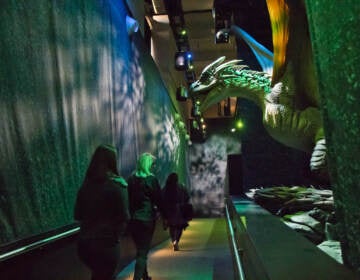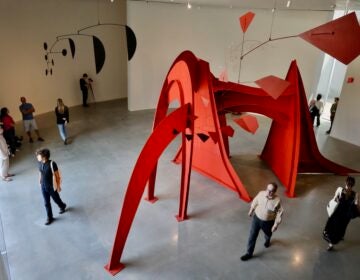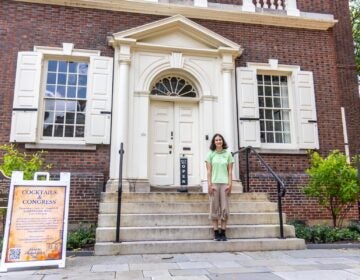Don’t believe your eyes: New Museum of Illusions opens in Philadelphia
The global franchise of immersive optical and spatial trickery has opened in more than 35 cities, now including Philadelphia.

Stacy Rangel Stec walks through a tunnel whose swirling lights create an illusion of motion at the Museum of Illusions in Philadelphia. (Emma Lee/WHYY)
The Museum of Illusions opens today in Philadelphia, near Independence Mall. The relatively small space — about 5,000 square feet — features optical and spatial illusions designed to disrupt your eyes from your brain.
It features classic perception tricks, like the Ames Room, conceived by the American psychologist and ophthalmologist Adelbert Ames, in which a person on one side of the room appears much larger than their partner on the other side. It also features the Beuchet Chair, created by French psychologist Jean Beuchet, in which a standing person appears to tower over a seated person.
Both illusions demonstrate the difference of depth perception between binocular vision (seeing through two eyes) and monocular vision (seeing through a single camera lens). The trick only works if you take a picture.
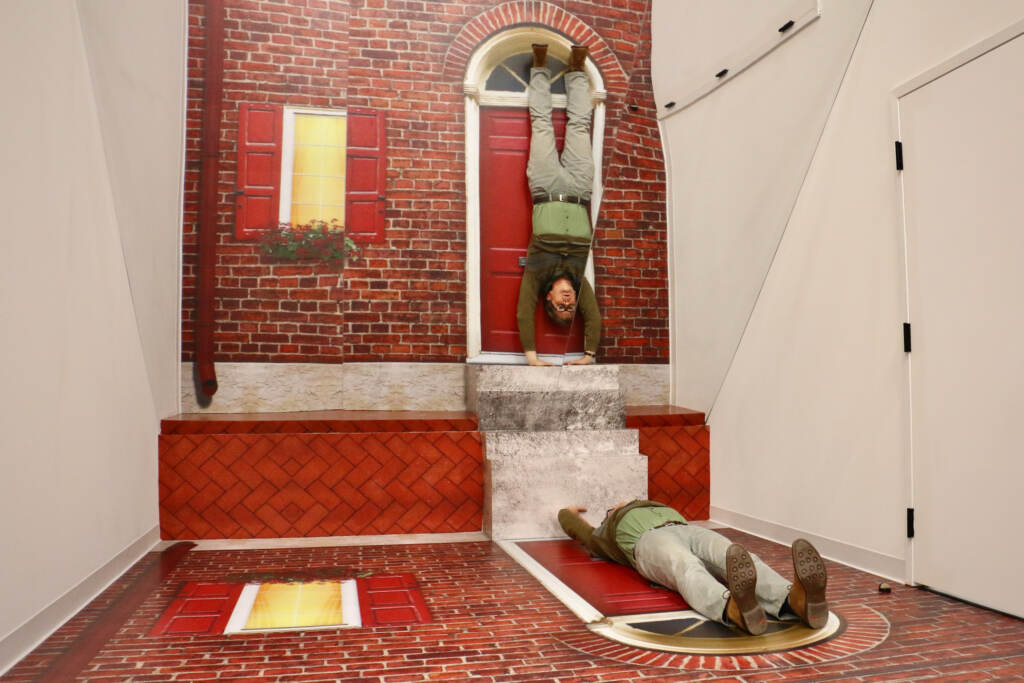
The Museum of Illusions tells you exactly where to stand to make the illusion work, and exactly where another person can take a picture. The museum is designed around taking and sharing pictures on social media.
“You’re going to have a great time. You’re going to laugh,” said marketing manager Stacy Stec, who describes the museum as “edutainment.” “You’re also going to learn a thing or two about optical illusions, vision perception, and the human brain.”
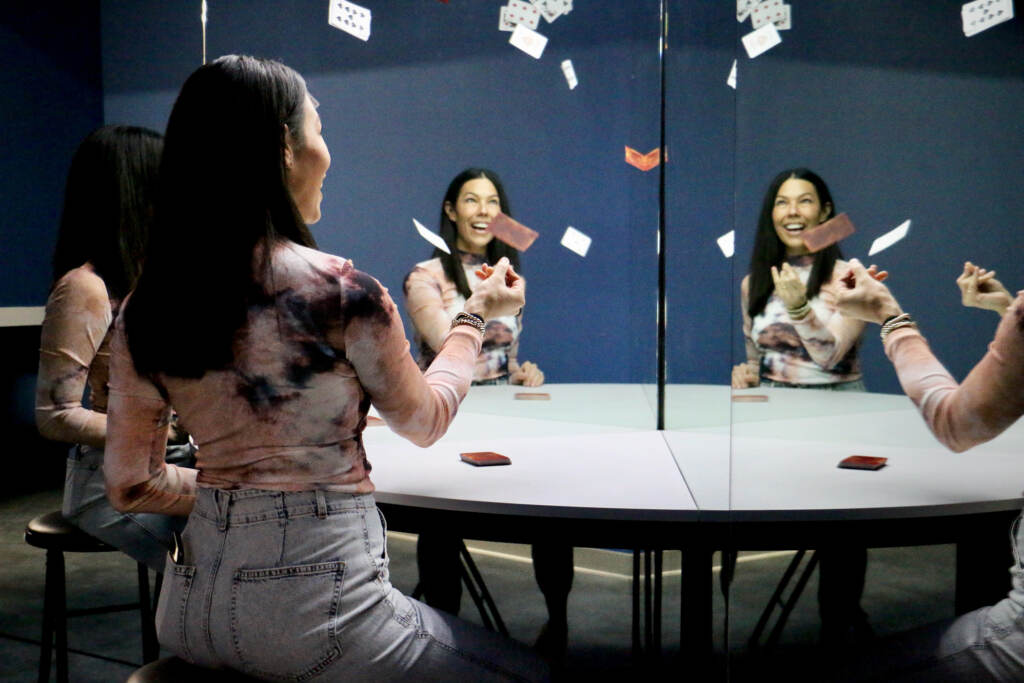
The Museum of Illusions concept was born in 2015 in Zagreb, Croatia, as the Muzej Iluzija. Since then it has been franchised into more than 35 cities around the world, including Miami, Chicago, Houston, and New York.
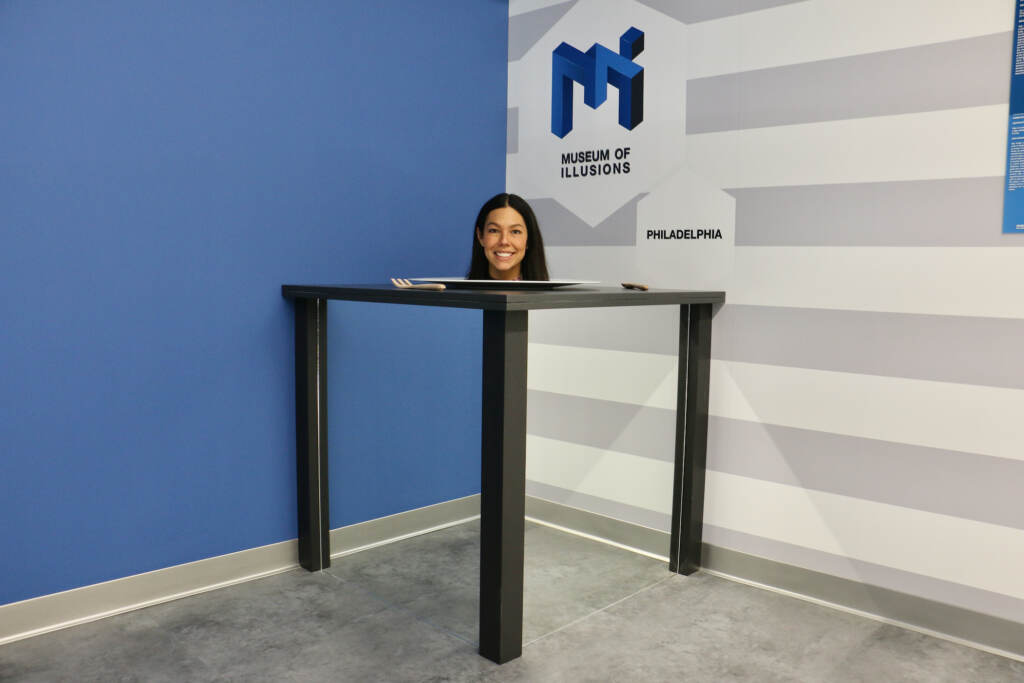
The Philadelphia museum, sharing a building with the newly opened Bible Museum, was supposed to open a few months ago but encountered delays in permits and construction.
Just as some exhibits require a camera lens to work, others do not translate at all to camera: the Vortex Tunnel is a catwalk spanning through a spinning tunnel. The visitor experiences vertigo as the vestibular system — the sense of balance inside your inner ear — is thrown off by the spin. Inside the tunnel, you involuntarily fall against the railing to correct a false sense of imbalance, even though the walkway remains flat.
It’s a purely visceral reaction. On camera, you wind up looking like a fool who drank too much. (The solution is to take a page from spinning ballerinas and ice skaters, and lock your eye to a fixed point in the distance. Your brain won’t be fooled by the rotating tunnel.)
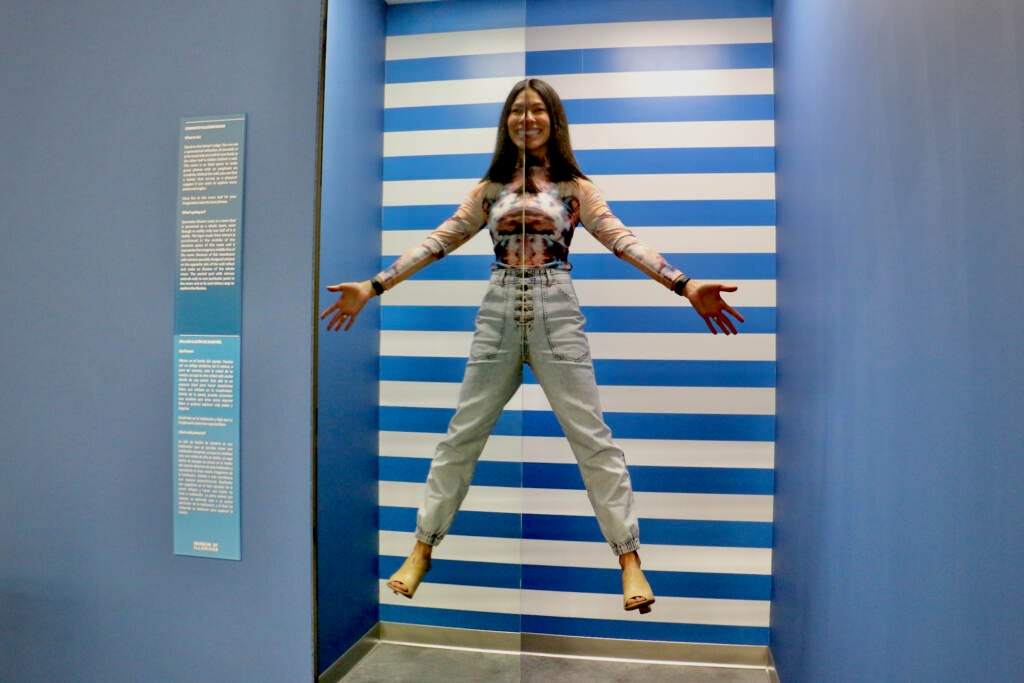
The main attractions are the immersive rooms, like the Infinity Room, with mirrors that appear to clone you into the distance forever; and the tilted room where, through a camera aligned with the angled floor, you appear to stand at an impossible lean.
The walls of the museum are hung with graphic illusions, like the Müller-Lyer arrows in which two lines of equal length are tipped with arrows pointing outward, and arrows pointing inward. The former appears to be longer than the latter. A dense collage of small pictures seems to be random, but with sufficient distance a famous face emerges — that distance can be aided by a camera.
Such graphics are sometimes used in academic studies to better understand optical illusion susceptibility.
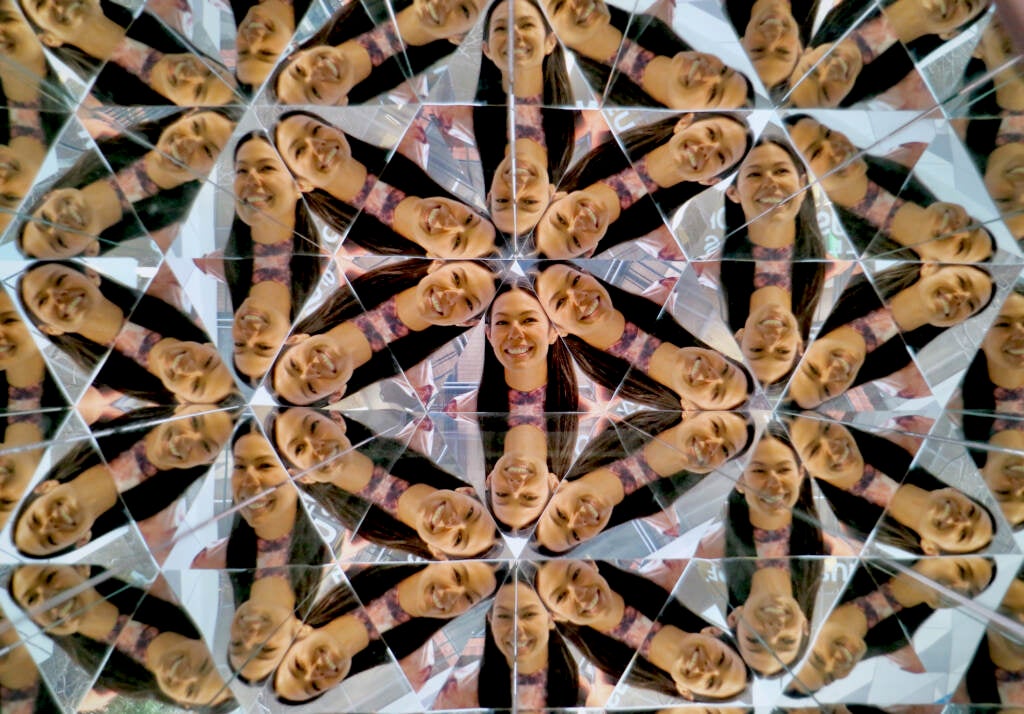
There are moments when your eyes and your brain can be completely at odds with each other. An abstract graphic image on a wall, when seen from a distance, appears to be two-dimensional, but its crisscrossing diagonal lines waver when moved side to side.
When I move closer, the graphic reveals itself as a three-dimensional panel, with parts of the image projecting out from the wall. However, my brain refused to believe that what it had accepted as flat could in reality be protruding, to the point where I felt dizzy approaching the panel.
But the brain learns. Perhaps too well. After experiencing the 3D panel several times with the uncomfortable sense of vertigo, my brain ultimately learned how to look at it. It no longer looks flat to me. The illusion was destroyed.
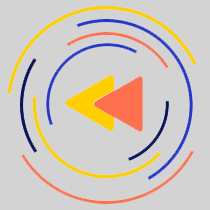
Saturdays just got more interesting.
WHYY is your source for fact-based, in-depth journalism and information. As a nonprofit organization, we rely on financial support from readers like you. Please give today.



